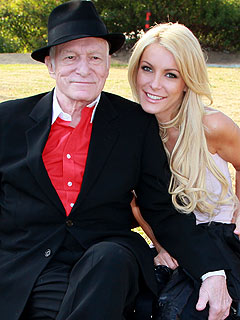TOKYO (Reuters) - Asian shares extended gains for a seventh day on Thursday, after the U.S. Federal Reserve took new stimulus steps to bolster the economy, pressuring the yen with expectations the Japanese central bank will follow suit with more easing next week.
While stocks gained, oil and gold fell from post-Fed rallies, as investors took profits ahead of the year-end, and concerns over the U.S. budget impasse also weighed on sentiment.
The upside for equities was also contained despite the Fed's fresh dose of liquidity-pumping measures, as investors were worried the United States would miss a year-end deadline to avert the "fiscal cliff," some $600 billion of tax hikes and spending cuts scheduled to start in January.
U.S. House of Representatives Speaker John Boehner said on Wednesday "serious differences" remain with President Barack Obama on the budget talks.
Failure to reach a compromise by the end of the year risks pushing the U.S. economy into recession and has stoked fears that a fragile recovery trend emerging in China and some other countries would be stifled.
Against this backdrop, European shares were expected to start narrowly mixed, with financial spreadbetters predicting London's FTSE 100 <.ftse>, Paris's CAC-40 <.fchi> and Frankfurt's DAX <.gdaxi> will open flat to 0.2 percent higher. A 0.1 percent gain in U.S. stock futures hinted at a firm Wall Street open. <.l><.eu><.n/>
MSCI's broadest index of Asia-Pacific shares outside Japan <.miapj0000pus> added 0.3 percent to a 16-month peak, having hit successive 16-month highs since December 5. South Korean shares <.ks11> advanced 0.8 percent to a two-month high.
"The Fed's easing measures met the market's expectations, while the setting of clear inflation and unemployment targets exceeded hopes and will clear uncertainty on the monetary front," said Kim Yong-goo, an analyst at Samsung Securities.
The U.S. central bank committed to monthly purchases of $45 billion in Treasuries on top of the $40 billion per month in mortgage-backed bonds it started buying in September. But it also took the unprecedented step of indicating interest rates would remain near zero until unemployment falls to at least 6.5 percent.
YEN WEAKNESS CONTINUES
The dollar advanced to its loftiest in nearly nine months against the yen, touching a high of 83.635 yen. The slumping yen boosted Japan's Nikkei share average <.n225> up 1.6 percent and above 9,700 for the first time in eight months. <.t/>
Japan holds an election on Sunday, with opinion surveys showing conservative former Prime Minister Shinzo Abe's opposition Liberal Democratic Party and its smaller ally heading for a resounding victory.
Abe wants to step up aggressive monetary easing along with heavy public works spending, policy prescriptions dubbed "Abenomics" by the media, and while he threatens to curtail the Bank of Japan's independence, investors reckon the responsibility of power will prevent Abe taking excessive risks that could lead to a bond market meltdown.
"As the Fed sets direction on policy rates for the rest of central banks and equity markets, the Bank of Japan sets the currency vehicle, by stepping up asset purchases and driving down the yen once LDP Chief Abe becomes the likely PM at Sunday's elections," Ashraf Laidi, chief global strategist at City Index, said in a note to clients.
At its December 19-20 meeting, the BOJ is widely expected to further ease monetary policy to support its weak economy.
The Fed's latest move to make the jobless rate a target for its monetary policy could have a longer-term implication on the BOJ.
"While the BOJ's ultimate goal is to pull Japan out of deflation, the Fed's latest move could prompt Japanese politicians or the government to urge the BOJ to also commit itself to growth, not just price stability," said Chotaro Morita, chief fixed income strategist at Barclays.
Morita said that market consensus is for the BOJ to expand its asset-buying and lending program, currently at 91 trillion yen ($1.1 trillion), by another 5-10 trillion yen, and put off taking bolder steps until after a new cabinet is formed.
Rising U.S. Treasury bond yields also drew demand for the dollar against the yen, given the stable and low Japanese yields.
BETTER EUROPEAN NEWS
The euro was relatively more robust than the dollar and the yen, inching up 0.1 percent to $1.3082 to approach Wednesday's high of $1.3098, as some positive news emerged.
Europe clinched a deal on Thursday to give the European Central Bank new powers to supervise euro zone banks, the first step in a new phase of closer integration to help underpin the single currency.
Greece's foreign lenders welcomed a bond buyback, paving the way for Athens to get long-delayed aid to avoid bankruptcy.
In Italy, another debt-straddled euro zone country, Silvio Berlusconi offered to stand back and make way for Mario Monti as Italy's next leader if the outgoing technocrat premier agreed to run as the candidate for a center-right coalition. Monti's intention to resign has raised concerns that his austerity policies may not be carried out.
Oil prices retreated from overnight gains, with U.S. crude futures down 0.2 percent to $86.57 a barrel and Brent falling 0.2 percent to $109.24.
Gold tumbled more than 1 percent on stop-loss selling after touching their highest in nearly two weeks on Wednesday. Spot gold dropped as much as 1 percent to $1,693.80.
($1 = 82.9300 Japanese yen)
(Additional reporting by Somang Yang in Seoul; Editing by Jacqueline Wong)










